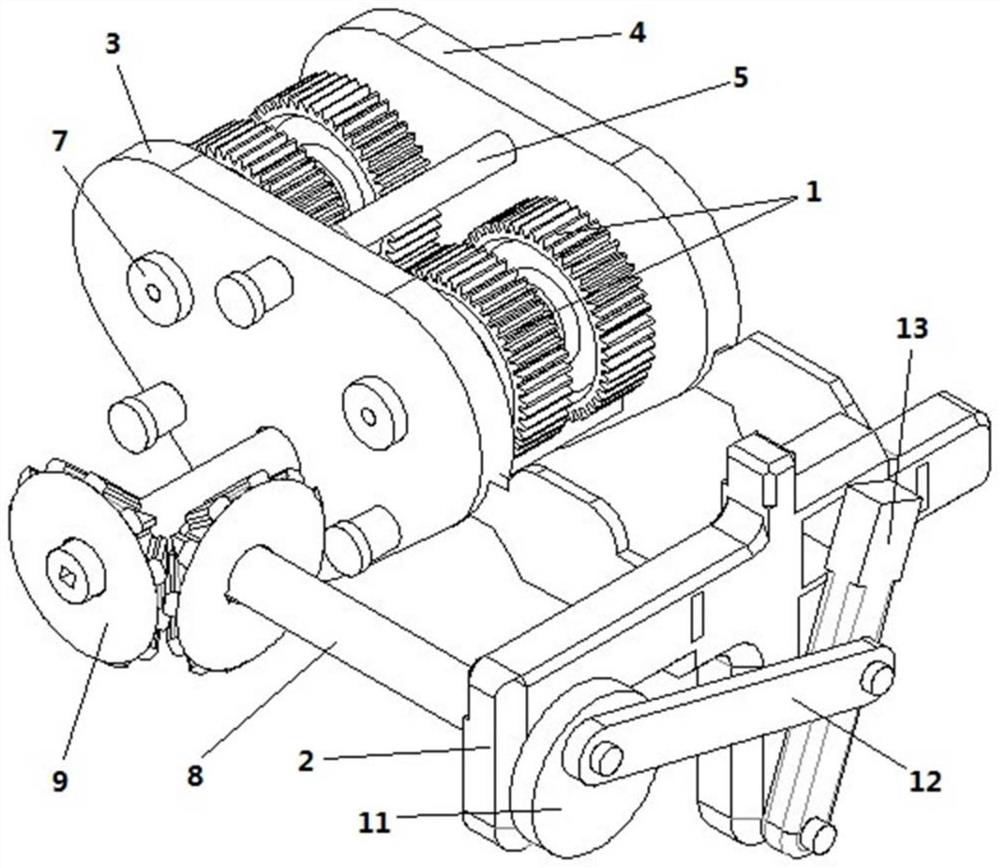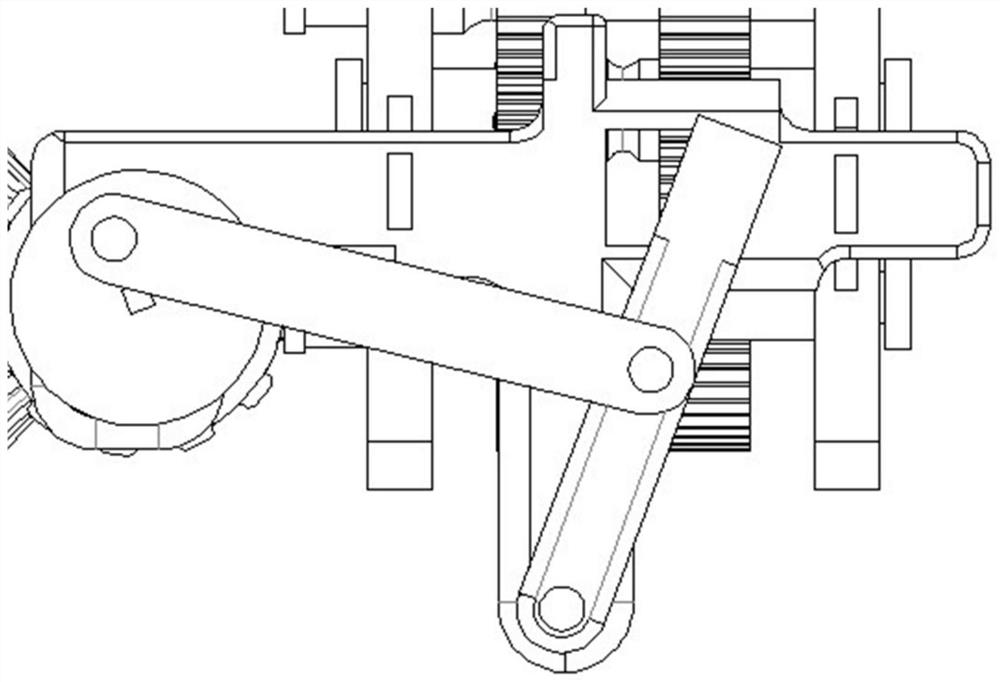A high-voltage line mechanical deicing robot driven by a single motor
A single-motor-driven, high-voltage line technology, applied in the installation of cables, electrical components, overhead installation, etc., can solve the problems that the deicer cannot be too close to the high-voltage line, the power of the high-voltage line is interrupted, and the parts of the device are complicated, so as to alleviate the problem of manual deicing. Pressure, easy de-icing operation, low cost effect
- Summary
- Abstract
- Description
- Claims
- Application Information
AI Technical Summary
Problems solved by technology
Method used
Image
Examples
Embodiment
[0025] Aiming at the severe cold outdoor environment and dangerous high-voltage operation process, this robot is specially invented to replace manual deicing operation on high-voltage lines.
[0026] High-voltage line deicing robot structure, such as figure 1 It is mainly composed of three parts: one is the walking mechanism, which drives the whole mechanism forward or backward through the meshing mode between the gears (such as figure 2 ); the other is the ice knocking mechanism, which uses the rocker slider mechanism to drive the ice knocking hammer to knock the high-voltage line to remove the ice coating. This method belongs to mechanical deicing (such as image 3 ); the last one is a transition mechanism, which transmits motion through the meshing between two bevel gears (such as Figure 4 ).
[0027] The walking mechanism is mainly composed of six large gears, three shafts and a fixed frame. The three shafts are placed through the fixed frame in a triangular shape. The...
PUM
 Login to View More
Login to View More Abstract
Description
Claims
Application Information
 Login to View More
Login to View More - R&D
- Intellectual Property
- Life Sciences
- Materials
- Tech Scout
- Unparalleled Data Quality
- Higher Quality Content
- 60% Fewer Hallucinations
Browse by: Latest US Patents, China's latest patents, Technical Efficacy Thesaurus, Application Domain, Technology Topic, Popular Technical Reports.
© 2025 PatSnap. All rights reserved.Legal|Privacy policy|Modern Slavery Act Transparency Statement|Sitemap|About US| Contact US: help@patsnap.com



